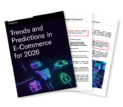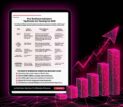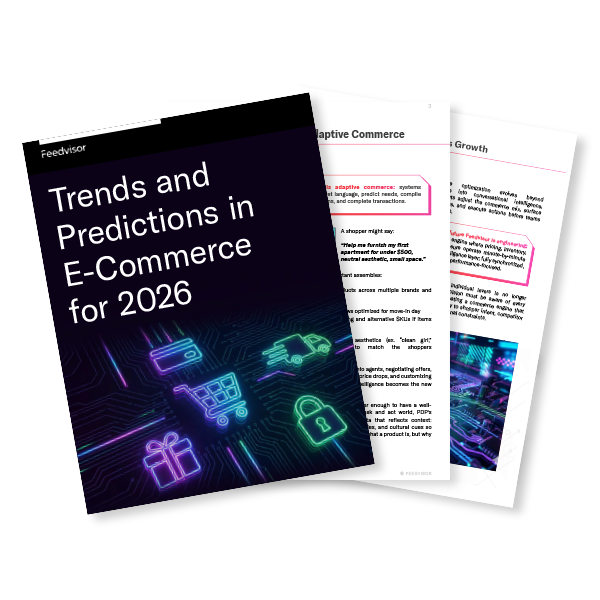
Categories
Latest Posts
Tags
Advertising Amazon Amazon Advertising Amazon Experts Amazon Listing Optimization Amazon Marketplace Amazon News Amazon Prime Amazon Professional Sellers Summit Amazon Seller amazon sellers Amazon Seller Tips Amazon Seller Tools ASIN Brand Management Brands Buy Box Campaign Manager Conference COVID-19 downloadable Dynamic Pricing Ecommerce FBA FBM Holiday Season industry news Multi-Channel Fulfillment Optimize pay-per-click Pricing Algorithm Pricing Software Private Label Profits Repricing Repricing Software Revenue Sales Seller Seller-Fulfilled Prime Seller Performance Metrics SEO SKU Sponsored Products Ads Strategy
Get the latest insights right in your inbox
Resource | Blog

Navigating Tariffs and Technology: The Future of Logistics in E-Commerce
SUMMARY
In 2025, logistics will define brand competitiveness as tariffs reshape e-commerce. Discover how businesses can adapt with AI, automation, and smarter fulfillment.

Rachel Horner
Rachel Horner serves as a Content Marketing Writer for Feedvisor. She has extensive experience in writing for diverse B2B brands, particularly in the tech industry, and is dedicated to fostering meaningful brand-audience connections.
Logistics has become a high-stakes challenge for e-commerce businesses, with President Trump’s proposed tariffs forcing a major shift in strategies. Yet, adversity often sparks innovation—and these tariffs are pushing companies to test and refine advanced delivery models to both survive and thrive.
E-commerce giants, like Amazon and Walmart, have revolutionized logistics through cutting-edge innovations. Below, we explore their key advancements and how your business can leverage this new era of logistics to stay ahead.
Amazon’s Edge: Pioneering MicroDistribution and Automation
Amazon continues to set the standard in logistics, leveraging its vast network of micro-distribution centers and cutting-edge technologies to improve its fulfillment speed — over 40 million customers benefitted from same-day delivery in Q3, marking a 25% year-over-year (YoY) increase.
The company’s Automated Warehousing and Distribution (AWD) system integrates AI, robotics, and data analytics to streamline inventory management and accelerate fulfillment. Its drone delivery pilot program, currently targeting high-density urban areas, is poised for national expansion. This innovation could redefine consumer convenience, enabling delivery of small, high-demand items in under 30 minutes.
In addition, Amazon is exploring the use of self-driving trucks and autonomous delivery robots to revolutionize both long-haul transportation and last-mile delivery. These advancements could reduce costs, minimize delays, and ensure precision even in congested or hard-to-reach areas, further solidifying Amazon’s logistical dominance.
Walmart’s Focus: Redefining Home Integration
Not to be outdone, Walmart is pushing the boundaries of logistics with its bold in-home delivery models, resulting in a 20% reduction in U.S. net delivery cost per order in Q4 for the fiscal year of 2025. Using smart lock technology, Walmart’s delivery personnel can place goods directly into customers’ refrigerators or pantries, offering unparalleled convenience and security. This level of integration caters to busy households and elevates the shopping experience by eliminating the need for consumers to be home during deliveries.
Walmart is selling its advanced systems and robotics business to Symbotic, which will develop an AI-powered robotics platform to automate pickup and delivery centers; Walmart will invest $520 million to fund the program and acquire 400 APDs over several years.
Walmart is also enhancing its logistics network through regional fulfillment centers powered by automation and machine learning, ensuring faster delivery to rural and suburban areas. Its emphasis on blending physical retail and e-commerce capabilities allows it to maintain a competitive edge in areas where Amazon’s infrastructure may be less prominent.

Get Ahead with the Leading Pricing Optimization Technology
Protect Your Margins with AI-Powered Precision
The Role of Emerging Technologies
Adapting to these changes is no easy feat. Consider that:
- Tariffs are pushing the logistics industry to become more agile, diversified, and technologically advanced. Logistics firms must navigate complex customs regulations, invest in new distribution centers, and overhaul supply chains.
- Customer expectations are shifting, thanks to real-time tracking and predictive analytics. Consumers now expect real-time updates on their packages and a seamless, fast delivery experience.
Businesses must navigate complex customs regulations, invest in new distribution centers, and overhaul supply chains. Enter new, innovative technologies.
AI-driven inventory management helps businesses optimize stock with smarter, more efficient strategies. By analyzing historical sales, seasonal trends, and external factors like economic shifts and weather, AI delivers highly accurate demand forecasts.
For example, if new tariffs force suppliers to change shipping routes, an AI-powered tool can predict potential delays, suggest alternative suppliers, and adjust orders based on updated lead times—keeping inventory aligned with actual demand.
Consider that logistics and pricing are intertwined. Today’s AI-first technology allows brands to adjust pricing in sync with their supply chain.
Imagine a brand navigating price changes due to tariffs. How much can they raise prices without losing demand? AI-driven algorithms continuously test price points, detecting shifts in demand and enabling precise, dynamic pricing decisions. With ongoing AI optimization, businesses can balance inventory clearance with profitability, reducing waste and improving cash flow.
It doesn’t stop there. Advancements like AI-driven route optimization, blockchain for supply chain transparency, and predictive analytics are revolutionizing delivery. As self-driving trucks, drones, and delivery robots move from pilot programs to full-scale use, the gap between consumer expectations, business demands, and delivery capabilities continues to close.
How Can Your Business Adapt?
For brands and sellers, logistics innovation is not just a supply chain improvement—it is a competitive necessity. Consumers now expect not just fast delivery but seamless and personalized experiences, from order tracking to flexible return options.
Partnering with logistics providers or adopting advanced technologies allows brands to meet these demands and build customer loyalty in a crowded market. To stay adaptable, consider short-term, flexible leases instead of long-term commitments. A transactional pricing model ensures cost predictability and aligns with actual usage, helping you manage expenses efficiently.
Final Thoughts
Logistics is no longer just a backend operation; it is a decisive factor in e-commerce success, driving adaptability to emerging policies, boosting customer satisfaction, loyalty, and differentiation. As the industry evolves, businesses must leverage innovative solutions to stay competitive.
The right technology—including AI-powered optimization tools—will be crucial in navigating challenges while aligning with new customer expectations. By embracing advanced technologies, businesses can position themselves for long-term success and thrive in an ever-changing landscape. Start a free, 14-day trial of Feedvisor’s pricing optimization platform and ensure your business is prepared for the future.




